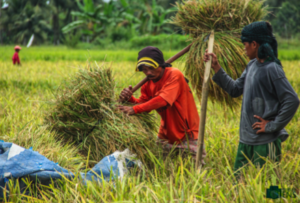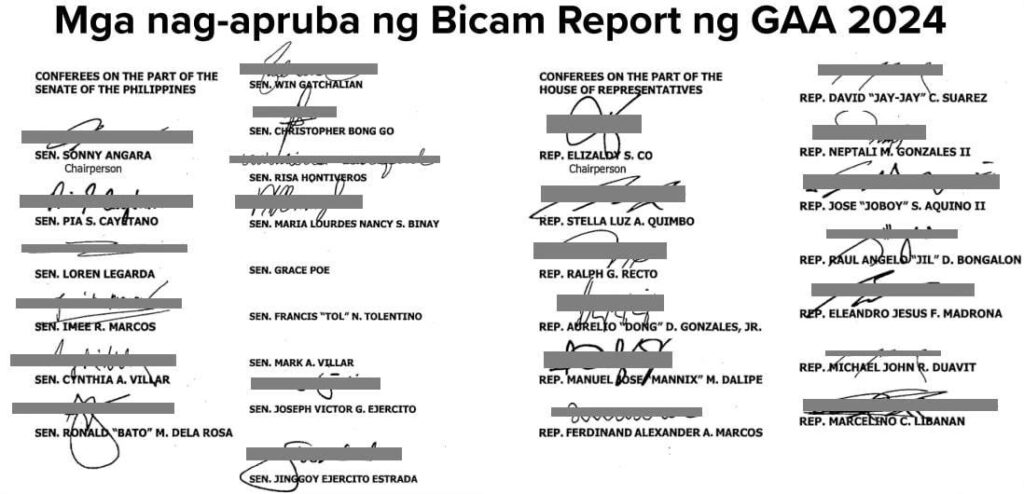The best argument against the Comprehensive Agrarian Reform Program (CARP) in Negros island is the 2022 Census on Agriculture and Fisheries (CAF), which showed that only 18% of farms in Negros are owned by those who till them, a big retreat from the 33% in 2012, and it means that exploitative systems like “arriendo” and “prenda” or land leasing have been gutting whatever success has been achieved in the island by CARP and its successor laws.
Worse, statistics indicate that landlordism is back with a vengeance, with a mere 0.9% of the landowners now controlling 30% of all farms, with only 155 landlords “owning” more than 40,000 hectares and 163,000 peasant families are left with crumbs of less than a hectare each, a parcel of land that can hardly be viable even if you practice what has been dubbed as “vertical agriculture.” The more it changes, the more it remains the same.
Landlords tried, and succeeded, in organizing agrarian reform beneficiaries (ARBs) into cooperatives, with their land leased to the landlords, who then were employed the ARBs as agricultural workers even if they were actually hoodwinked into believing they were “part owners” of the enterprise. Paid slave wages and with practically zero benefits, many of these ARBs ended up losing their land. In another dubious attempt to sabotage agrarian reform, lawmakers are now mulling a “national land use plan” that would kill the 10-year ban on the sale or lease of CARP land, a reverse asset reform scheme to pamper the likes of Manny Villar and other comprador politicians. CARP purportedly liberates peasants from landlessness but new laws will shackle them anew.
Political legerdemain is the name of the game, and while Ferdinand Marcos Jr. proffers the emancipation of peasants by 2028, Joel Consing of the Maharlika Investment Corp. (MIC) is promising huge parcels of land for plantations for foreign investors or joint ventures with agribusiness corporations, local or alien. The sweetener is the promise that government-owned lands (GOLs) will be theirs for the taking, the very tracts of land already promised for distribution to ARBs. Nice talk with a lot of argle-bargle from the principal officer of MIC, who used to be a trusted finance man of Ricky Razon.
Yet, there is a new deal in town, and it concerns the huge interest in green energy. On April 22, 2025, which happens to be Earth Day 2025, Makabayan senatorial candidate Danilo Ramos, also chairman of the Kilusang Magbubukid ng Pilipinas (KMP), revealed that land grabbing in Negros Occidental has become honorable, a necessary economic crime to promote “green energy.” Ramos said solar farms backed by corporate giants and foreign investors are spreading rapidly across Western Visayas, threatening to displace farmers, fast-track land reclassification and conversion and worsen rural landlessness. “The renewable energy boom under Marcos Jr. is a front for land grabbing,” said Ramos told participants at a Farmers’ Forum on Land Use Conversion in Bacolod City. “These so-called Green Energy projects are just old forms of feudal exploitation dressed in new language. What is replacing sugarcane in many haciendas is not food crops or community farms—it’s solar farms controlled by big corporations and foreign capital.”
While sugarcane monoculture dominates in more than 225,000 hectares in Negros—fueling profits for companies like Coca-Cola—solar farms are emerging as the next driver of land dispossession, this time in the name of clean energy. Negros has become ground zero for aggressive land use conversion and reclassification. KMP said this “green rush” is reinforcing long-standing haciendas and land monopolies and putting rural livelihoods at greater risk. In 2016, the Cadiz Solar Power Plant—then the largest in Southeast Asia—was built in 176 hectares of Hacienda Paz, displacing numerous farming families.
In 2023, the Ayala-owned ACEN Corp. acquired full ownership of San Carlos Solar Energy Inc. (Sacasol) and Negros Island Solar Energy Inc. (IslaSol)—two of the largest solar operators in the region. These buyouts gave ACEN control over hundreds of hectares of farms, denying peasants land for food production and other income-generating activities. Nonetheless, avarice is not only terrestrial but aquatic as well as the Marcos Jr. administration mulls plans for a 100-megawatt (MW) floating solar power facility, thus intensifying the commodification of natural resources in the guise of battling climate change. Like other anti-people projects, there were no consultations with affected communities, no free and prior informed consent (FPIC) from indigenous communities and certainly no discussions with farmers and fishermen who would lose their shirts.
“From sugar to solar, the story remains the same,” Ramos declared. “This is land taken from farmers and legitimate ARBs, handed over to profit-driven corporations—this time wrapped in a greener guise. There is nothing sustainable in displacing farmers and converting farmlands into industrial energy zones.” On April 22 and 23, farmers joined the Sakbayan ng Magbubukid ng Negros para sa Lupa at Kabuhayan, a protest-caravan calling for genuine land reform, sustainable livelihoods and justice for rural communities. Earth Day must not become a smokescreen for corporate greenwashing and land grabbing, they argued. (DIEGO MORRA)




